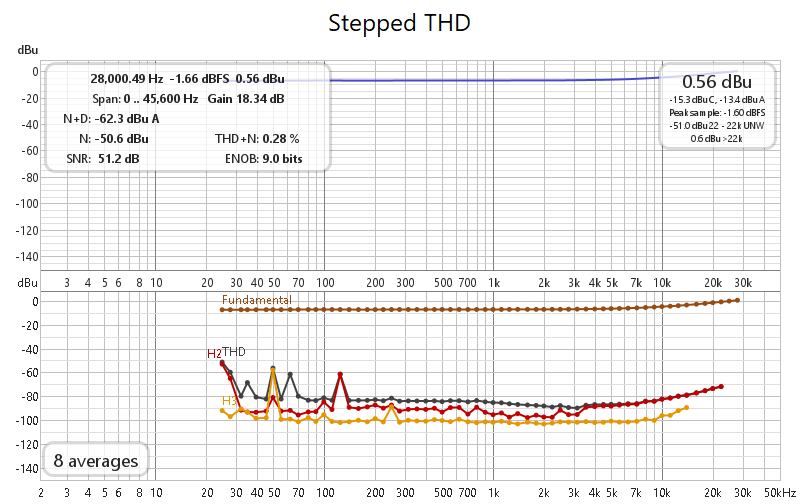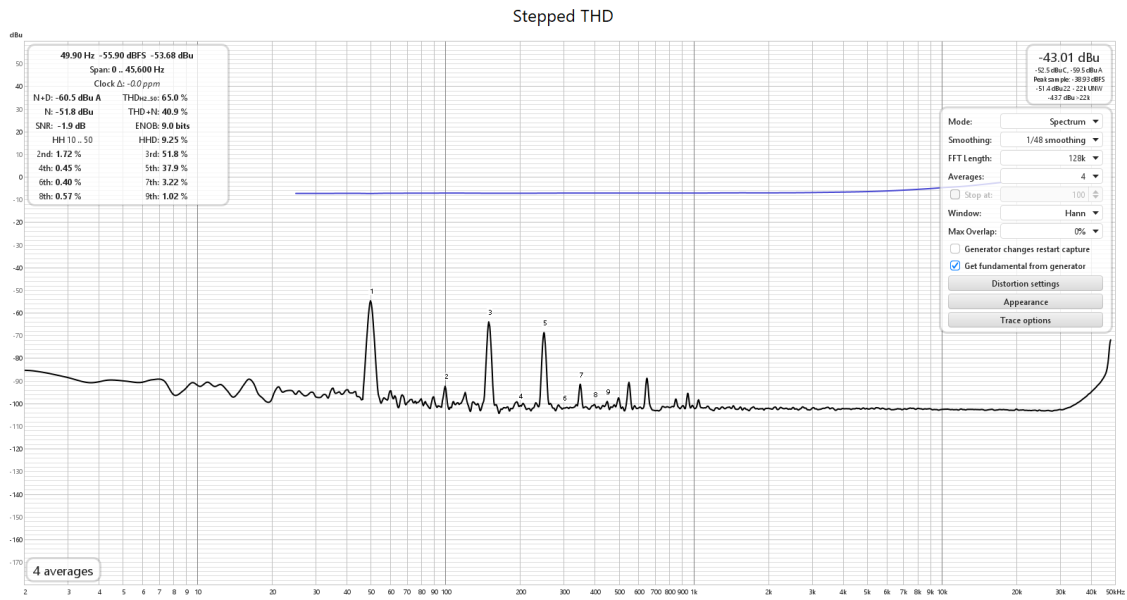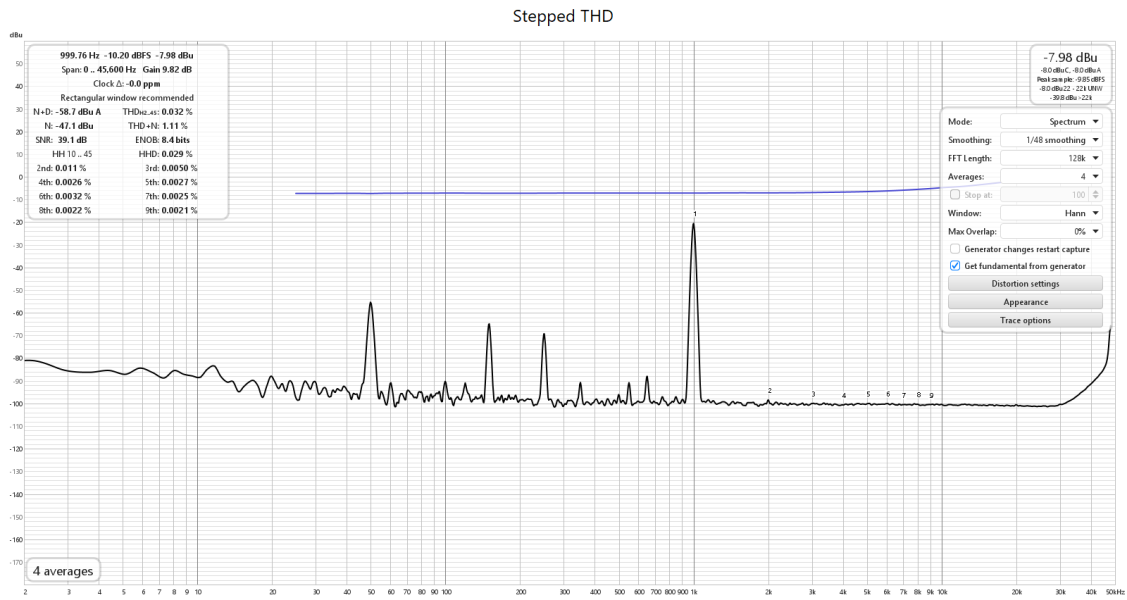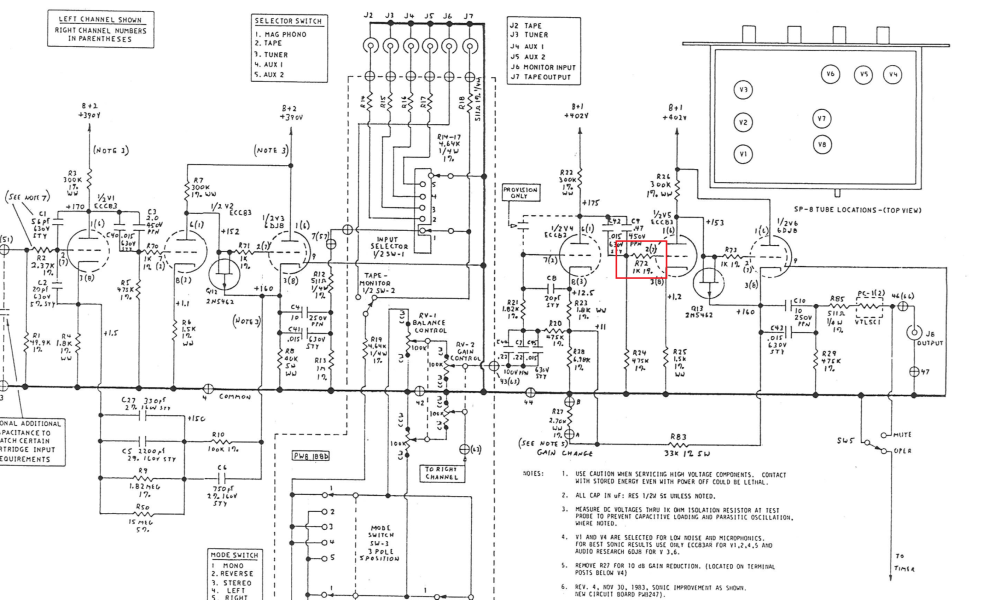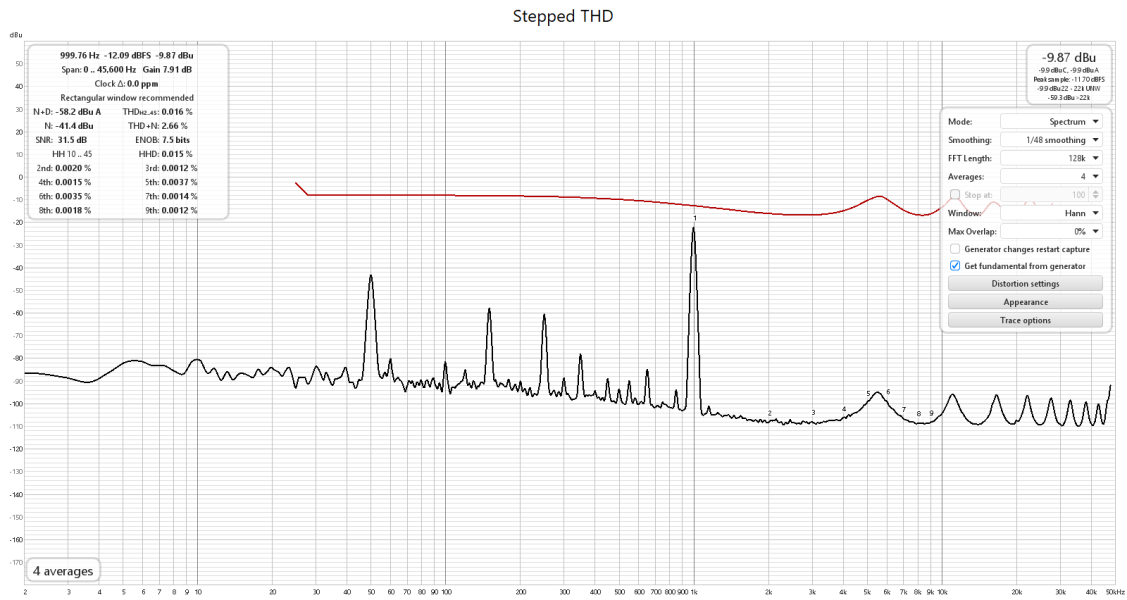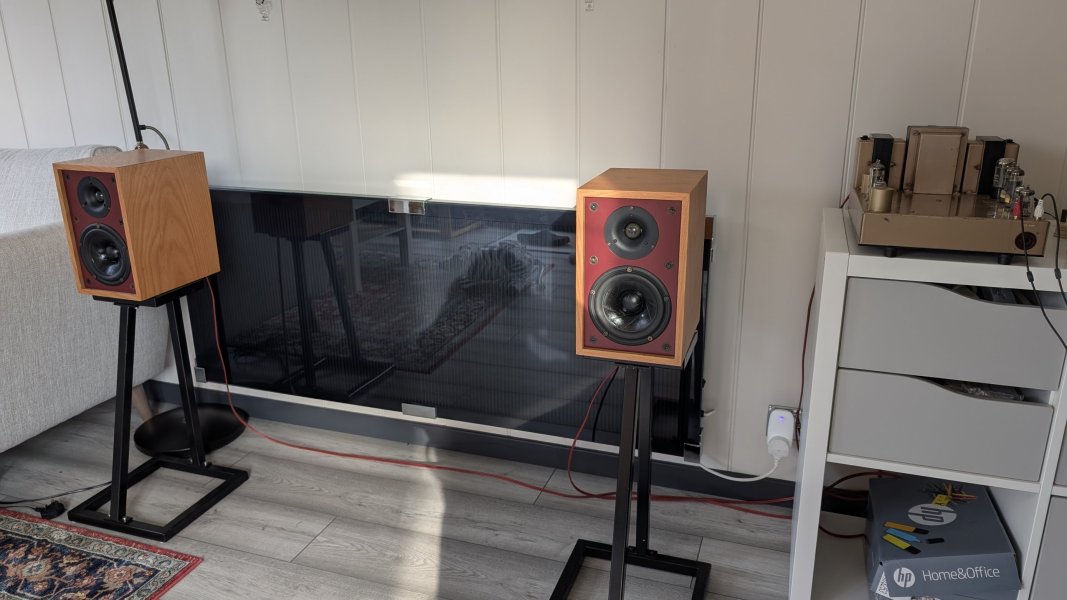Thank you both for sharing your excellent knowledge and time to help out. I really do appreciate it. And very good advice wrt the leads.
I did measure the ripple on the B+2 and B+1 rails. Both were around 4mV. That does seem extraordinarily low. Ripple on the 24v rail was around the same.
Pin 6 of U2 that feeds the grid of the ECC83 in the PSU is now just over 7V whilst I was running various tests and measurements.
There is certainly a warm up time where the voltages stabilise around the valves. I noticed the disturbance whether I touch any connection to Pins 1 and 6 of V4 and V5, even after the valves are at temperature. Interestingly, I see the same wander and return when I use the oscilloscope probe on the same pins.
Just using a sig gen today, I fed a 2.5kHz, 0.4V signal in thru the tuner input and watched the output. The output appeared "clean" for about 10 minutes or so. It then started to pick up an "overlay" of low level hash.
I used the second channel of the 'scope to monitor the voltage on pin 1 of V4. Clearly there was the signal at 2.5kHz on the anode. After a while, and this is hard to quite describe, the scope trace would spike up or down for maybe a moment, much like a digital signal changing from a low to a high state, a square shaped leading edge with a flat top, and then a gradient back down. All very brief and random. I saw this yesterday too, and not after a period of long operation. I've been around the board with my wooden chopstick tapping, hammering the board, components, etc looking for a correlation, but finding none.
I did hook the preamp up to an amp and speakers. Well apart from a juicy mains hum (which wasn't there before), the audio has a constant "hash" over the top, plus this spits and spots, rustling, cracking noises.
I will attempt to record the audio over the weekend and post a link.
Also, I should say that the line stage has valves that I know work, taken from another working amp.
I'm back to considering PSU still be broken (just not seeing voltages that are inline with the schematic) and/or, as you said @DonH50 there's a leaking cap somewhere. There are a couple of largeish film caps in the PSU, C18, C28, C16. Noting that R68, the one in series with C18 is reading 1R5 rather than 1R. I wonder about the PSU because I'm hearing the random noises in both channels.
Ho-hum...
I did measure the ripple on the B+2 and B+1 rails. Both were around 4mV. That does seem extraordinarily low. Ripple on the 24v rail was around the same.
Pin 6 of U2 that feeds the grid of the ECC83 in the PSU is now just over 7V whilst I was running various tests and measurements.
There is certainly a warm up time where the voltages stabilise around the valves. I noticed the disturbance whether I touch any connection to Pins 1 and 6 of V4 and V5, even after the valves are at temperature. Interestingly, I see the same wander and return when I use the oscilloscope probe on the same pins.
Just using a sig gen today, I fed a 2.5kHz, 0.4V signal in thru the tuner input and watched the output. The output appeared "clean" for about 10 minutes or so. It then started to pick up an "overlay" of low level hash.
I used the second channel of the 'scope to monitor the voltage on pin 1 of V4. Clearly there was the signal at 2.5kHz on the anode. After a while, and this is hard to quite describe, the scope trace would spike up or down for maybe a moment, much like a digital signal changing from a low to a high state, a square shaped leading edge with a flat top, and then a gradient back down. All very brief and random. I saw this yesterday too, and not after a period of long operation. I've been around the board with my wooden chopstick tapping, hammering the board, components, etc looking for a correlation, but finding none.
I did hook the preamp up to an amp and speakers. Well apart from a juicy mains hum (which wasn't there before), the audio has a constant "hash" over the top, plus this spits and spots, rustling, cracking noises.
I will attempt to record the audio over the weekend and post a link.
Also, I should say that the line stage has valves that I know work, taken from another working amp.
I'm back to considering PSU still be broken (just not seeing voltages that are inline with the schematic) and/or, as you said @DonH50 there's a leaking cap somewhere. There are a couple of largeish film caps in the PSU, C18, C28, C16. Noting that R68, the one in series with C18 is reading 1R5 rather than 1R. I wonder about the PSU because I'm hearing the random noises in both channels.
Ho-hum...


